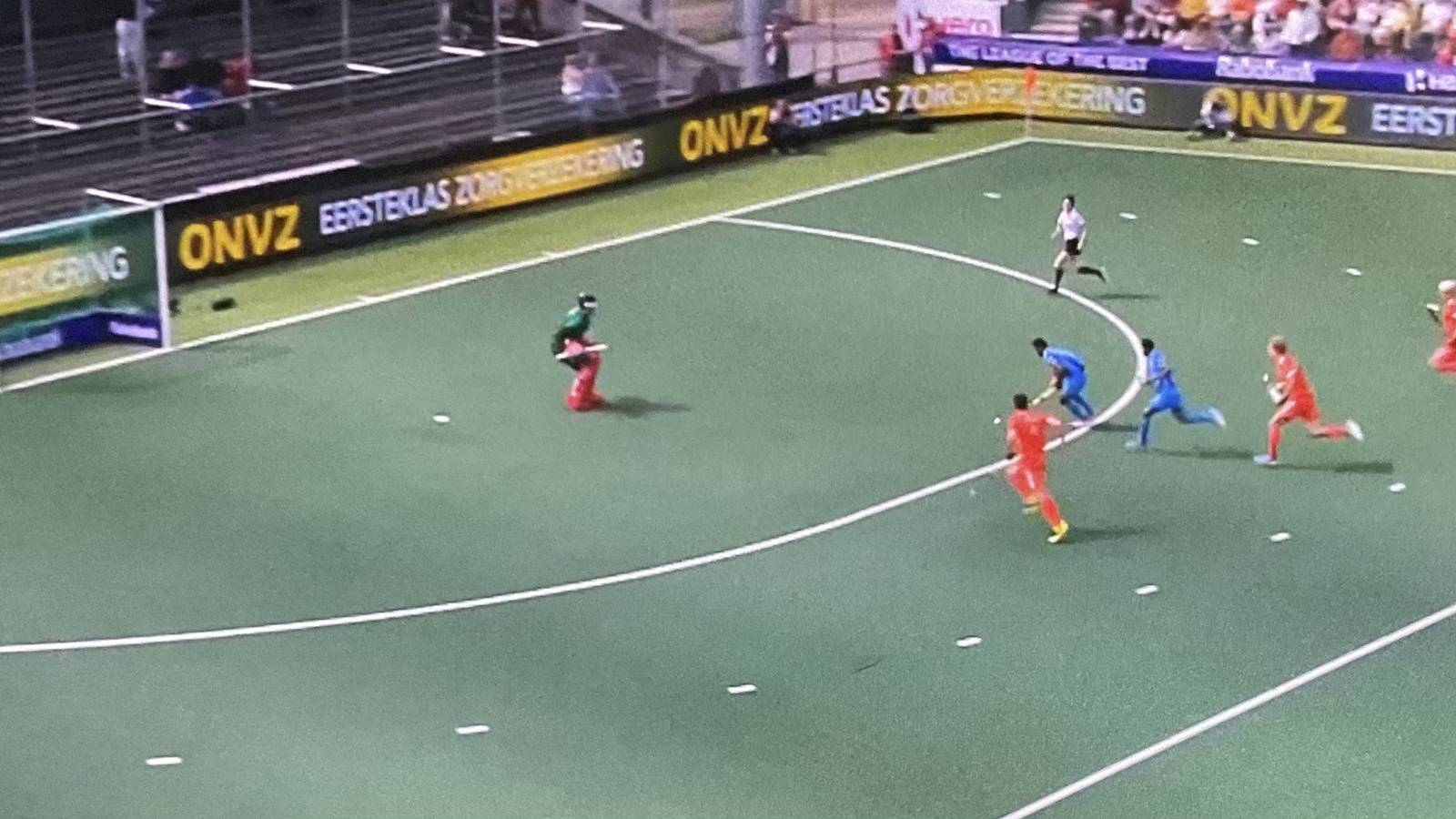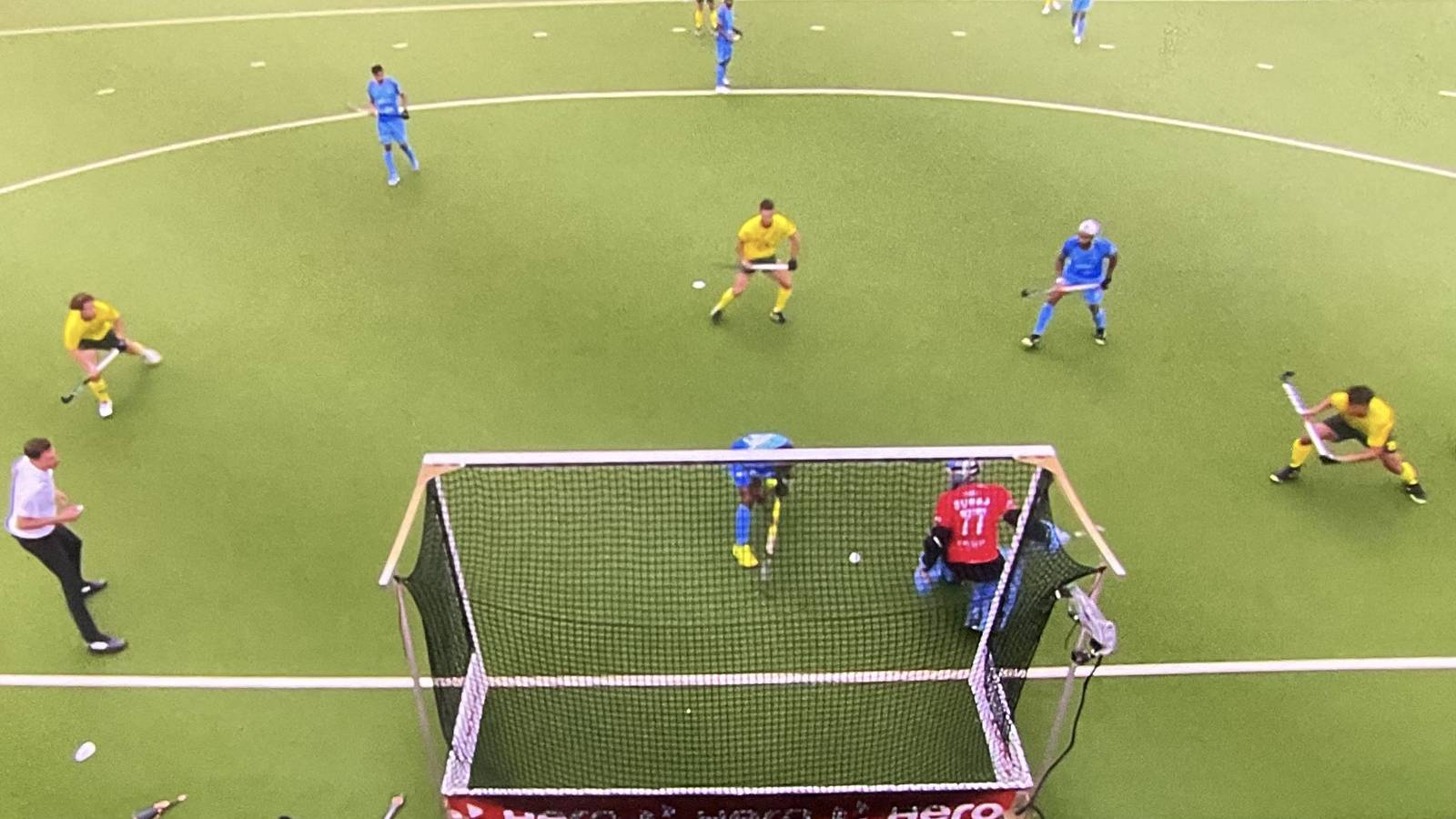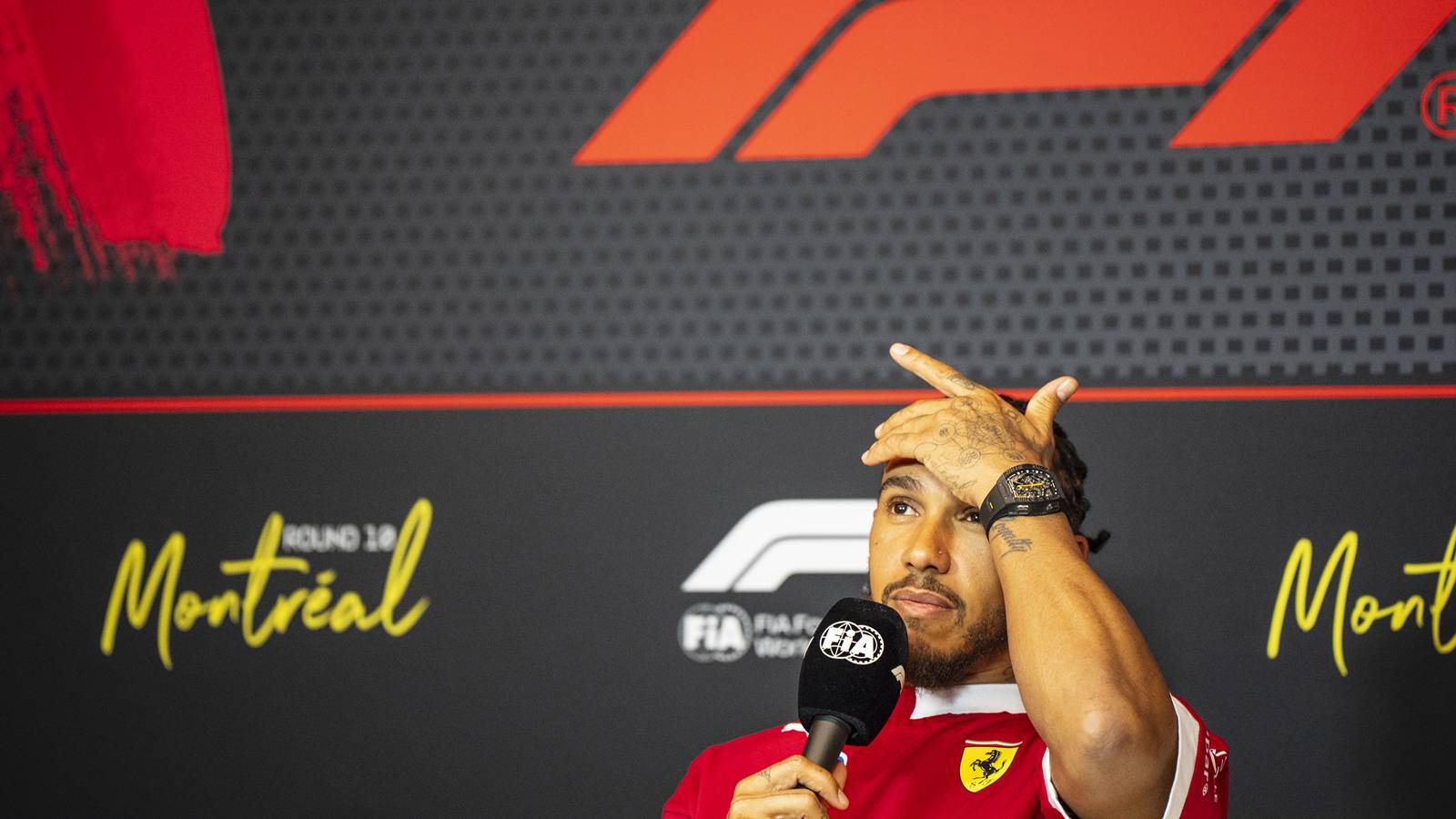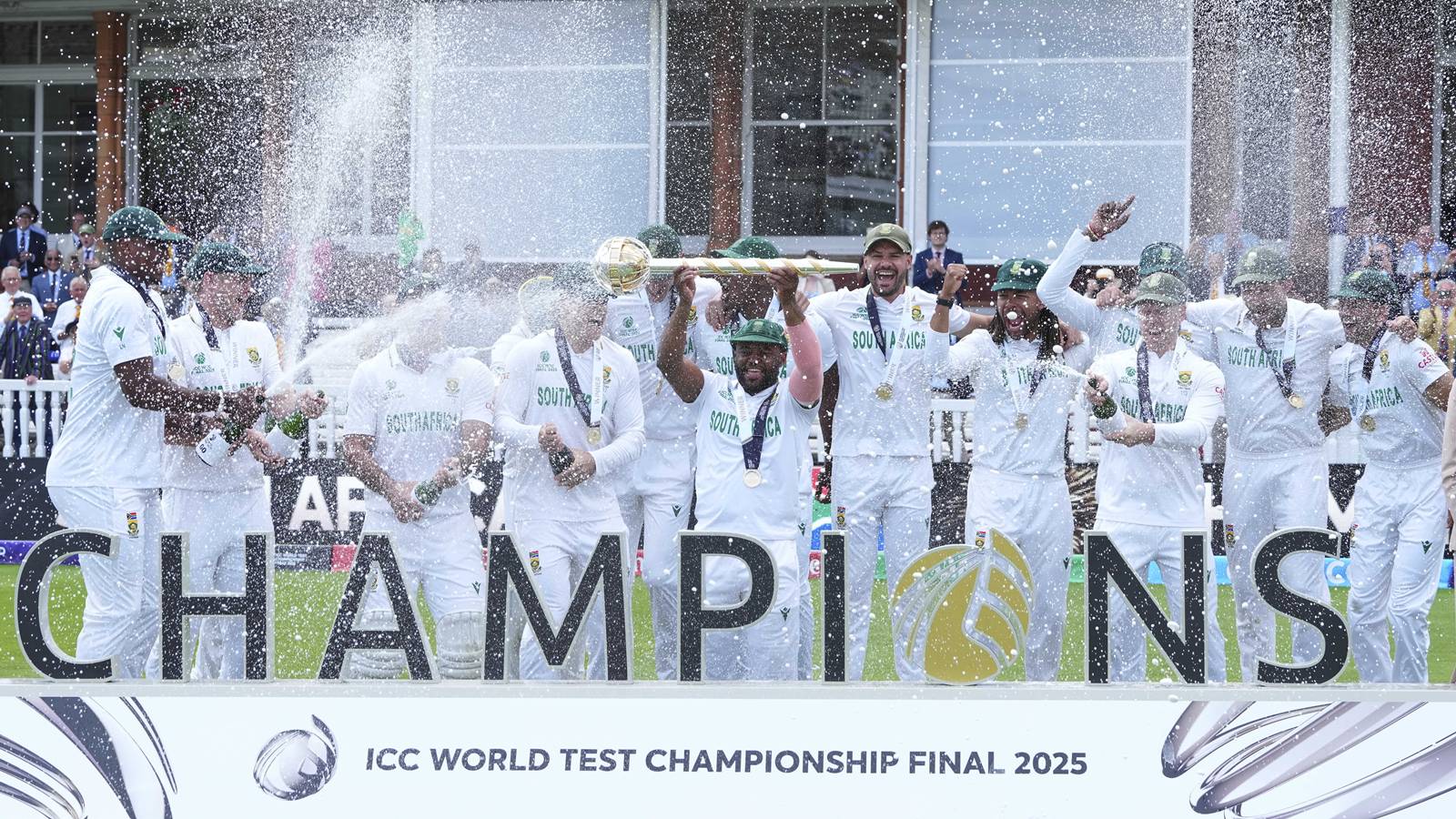ARTICLE AD BOX
Lalit Upadhyay, whose last international goal came in May 2024, thought he’d end the drought with an audacious one.
India had the momentum in their favour, having just scored an equaliser against Olympic champions Netherlands. Hardik Singh sliced open the Dutch defence with a pass that released Upadhyay one-on-one with the goalkeeper, Maurits Visser. Upadhyay, a veteran of 183 internationals, had a buffet of options: he could have rounded off the goalkeeper, aimed at one of the bottom corners or even sought the help of Sukhjeet Singh, who’d sprinted forward to create a 2v1 situation. Instead, Upadhyay chose to lob the six-foot-plus goalie. Visser went on his toes and swatted the ball away. Sukhjeet was screaming at his teammate.
 Lalit Upadhyay was one-on-one with Dutch goalkeeper Maurits Visser. He tried to lob the six-foot-plus goalie, who easily saved it.
Lalit Upadhyay was one-on-one with Dutch goalkeeper Maurits Visser. He tried to lob the six-foot-plus goalie, who easily saved it.
A match later, Amit Rohidas tried to be cheeky.
The defender had the ball at his stick, kissing the baseline a couple of metres left of Krishan Pathak’s goal, trapped by four Argentine forwards. Help arrived instantly; an equal number of Indian shirts were there for support. He could have simply whacked the ball out of danger, or used a teammate’s help. But Rohidas, who has made 214 appearances, chose the more difficult aerial route, mis-hit the ball, which went over the head of an Indian defender and landed comfortably at the top of the ‘D’ for an unmarked Matias Rey. It was an inch-perfect ‘assist’. And Rey smashed it into the goal.
 Amit Rohidas had multiple options to play the ball away from the Indian ‘D’ but he went for the aerial, mis-hit it and the ball landed at an unmarked Argentine attacker on the top of the ‘D’, who scored a goal.
Amit Rohidas had multiple options to play the ball away from the Indian ‘D’ but he went for the aerial, mis-hit it and the ball landed at an unmarked Argentine attacker on the top of the ‘D’, who scored a goal.
Against the next opponent, Australia, Sumit panicked.
Australia, trailing by a goal with just five minutes left to play, were raiding India’s goal from the baseline. With one such move, they beat the defenders and the goalkeeper Suraj Karkera, but Sumit was there to stop the ball from going in. When India needed his cool head the most, the midfielder — who has an experience of 157 internationals — got tangled in a defensive harakiri. He tried to slam the ball away from the goal only to hit an Australian player in front of him. It was deemed as dangerous play, Australia won a penalty corner, levelled the score and went on to win the match.
 Sumit tried to hit the ball out of danger in dying moments against Australia. However, it was deemed as dangerous, resulting in a penalty corner for Australia
Sumit tried to hit the ball out of danger in dying moments against Australia. However, it was deemed as dangerous, resulting in a penalty corner for Australia
These howlers have defined the Indian hockey team’s European sojourn so far. Craig Fulton went to the Netherlands and Belgium for the FIH Pro League matches with the hope of sealing a 2026 World Cup spot. But they have lost all six matches and are now third from the bottom in the nine-team tournament, with two more matches against Belgium still to be played coming weekend.
Story continues below this ad
Objectively speaking, the results don’t matter much. India should still qualify for the World Cup; they have two more chances. And, as we saw in the build-up to the Paris Olympics when India lost a string of matches, these games are more to test different combinations and tactics.
It should worry Fulton, however, that the players he gambled on for sealing the World Cup berth have continued making mistakes in key moments, which is a depressingly familiar sight for the team’s followers from pre-Fulton days.
India have one of the most experienced — if not most experienced — squads in the European leg of the Pro League. Only three out of the 24 players have played less than 50 matches while 14 have more than 100 appearances. In contrast, more than half of the players in the Australian team India played against on Saturday, when Sumit made that error, had played less than 25 matches.
So, to crumble under pressure and lose the decision-making abilities does not bode too well.
Story continues below this ad
The rest of the world is already looking at building a team for next year’s World Cup and, eventually, the 2028 Olympics. India started that process soon after Paris and the transition was visible more in the forward line, where India have had major issues.
Among the Paris and Tokyo Olympians, three forwards – Mandeep Singh (30), Upadhyay (31) and Gurjant Singh (30) – will be in their mid-30s by the time the LA Games will be played. Whether they will last an entire cycle in terms of fitness, and with their form up-and-down, has remained a big question.
Fulton has been seeking back-ups for them almost immediately after the Paris Olympics. He has tried the likes of Uttam Singh, Araijeet Singh Hundal, Gurjot Singh, Arshdeep Singh and Shilanand Lakra. Apart from Lakra, none of them are in the current 24-man squad.
Apart from wanting to secure the World Cup spot by taking the veterans along, Fulton had said he did not want to disturb the under-23 World Cup unit, which is being coached by former India goalkeeper PR Sreejesh. India will host the Junior World Cup later this year, and the bunch is also in Europe preparing for the tournament.
Story continues below this ad
But should India be rather preparing these young players for the senior World Cup rather than worrying about a junior event? The venues for these two legs of the Pro League, after all, are also the same that will be used for the World Cup next year. So, in that sense, this was a dress rehearsal.
The six defeats won’t yet set the alarm bells ringing. But India should no longer hit the snooze on the much-needed transitory process.



.png)
.png)
.png)

























 English (US) ·
English (US) ·